
Ubuntu is the most popular Debian-based Linux distribution for desktops and servers.
And Manjaro Linux is an Arch-based distro tailored for desktops.
Both are entirely different when it comes to user experience and features.
However, one of the common grounds is the desktop environment when considering Manjaro’s GNOME edition with Ubuntu.
But, what exactly are the differences? Is the package manager on Manjaro better? Are software tools available on both Ubuntu and Manjaro?
Here, we shall look at the differences in both the Linux distributions at certain key points.
Release Cycle
Ubuntu offers two different release cycles, considering the version you pick. If you are going with the Long-Term Support version, you get security/maintenance updates for at least five years from its release.
Suppose if you install Ubuntu 22.04 LTS, you will be getting updates until April 2027.
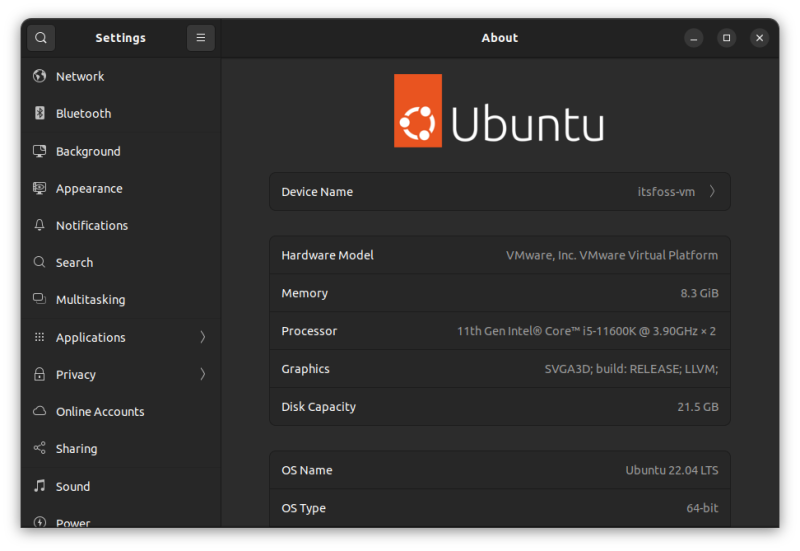
The LTS version is what we recommend for most desktop users.
However, if you want the latest and greatest, you can opt for the non-LTS releases that need an upgrade every nine months. Examples include Ubuntu 21.04, Ubuntu 21.10, and Ubuntu 22.10.
Note that the non-LTS releases involve changes that may affect your workflow and user experience. So, it isn’t recommended for everyone.
When choosing Manjaro Linux, you get a rolling release schedule for updates. So, you do not have to worry about the support for the version you use. It will automatically upgrade to the latest available version through regular updates.

With a rolling release cycle, you get the latest packages quickly. So, if you want to keep using an older version of the software, Manjaro Linux may not be the right choice for you.
Desktop Environments
Ubuntu features a customized version of the GNOME desktop. It may not be the latest, but it is likely to include the latest GNOME desktop environment if you use a newer Ubuntu version.
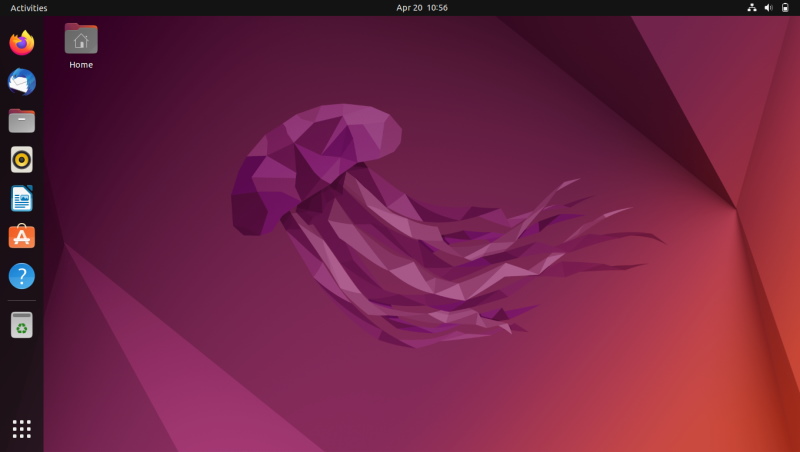
There are no other desktop environments by Canonical (the company behind Ubuntu).
However, if you want other desktop environments on top of Ubuntu, you can choose the official Ubuntu flavours including KDE, Budgie, LXQt, MATE, and XFCE as desktop environments. They are well-tested and stable Ubuntu Linux distributions when compared to unofficial or newer spins of Ubuntu with another desktop environment.
However, Ubuntu flavours do not get five years of software support; instead, you will be limited to three years of support for LTS versions.
With Manjaro, you can choose three official editions: XFCE, KDE, and GNOME. No matter the desktop environment, you stick to the rolling release model.
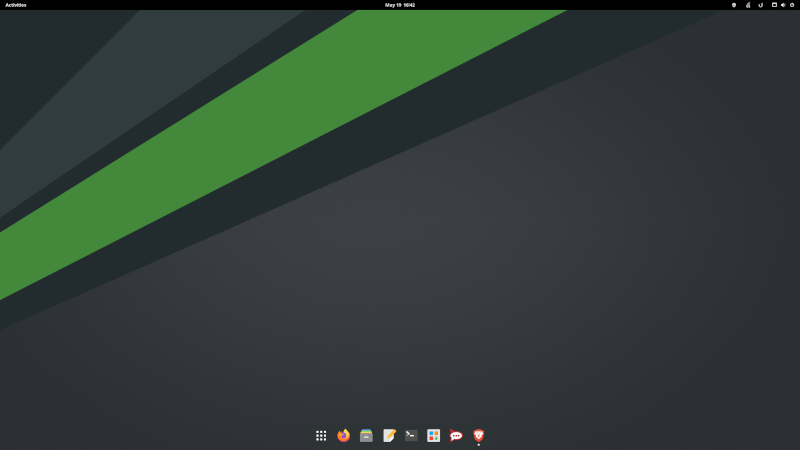
You do have some community editions with Budgie, MATE, LXQt, and more as well.
Package Manager or Software Ecosystem
You shouldn’t have trouble finding most of the essential Linux apps on both the distros.
However, Manjaro Linux gets an edge with a snappier experience using Pamac as its package manager.
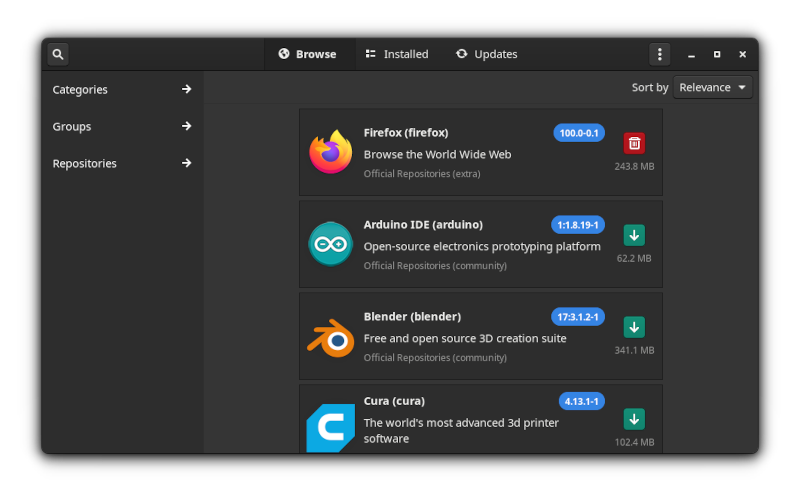
Compared to the software center on Ubuntu, Manjaro Linux offers a better experience for quickly installing/updating the software. And, it also supports Flatpak/Snap out-of-the-box if you want to enable them with a single click.
Ubuntu emphasizes Snap packages, and you will find some applications pre-installed as Snap (like Firefox web browser).
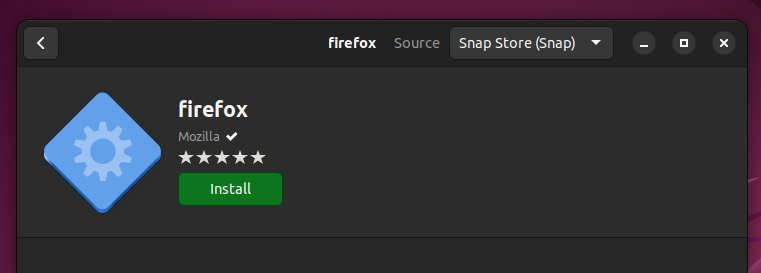
In the case of Manjaro Linux, you get the freedom to enable Flatpak/Snap if required.
With Ubuntu, the Software Center is not the best Linux offers. It could prove to be slower, as per your system configuration and over the year as you use it.
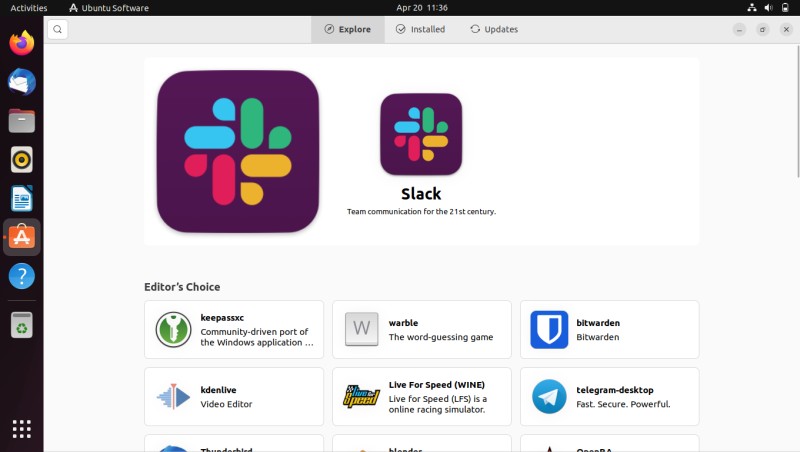
In addition to that, Manjaro Linux has access to AUR, which opens up access to almost every software that you may not find in Ubuntu’s software center.
So, in terms of the software ecosystem and the package manager, Manjaro Linux does provide many advantages over Ubuntu.
Ease of Use and Targeted Users
Ubuntu desktop is primarily tailored for ease of use. It focuses on providing the best possible combination of software and hardware compatibility to let any computer user work with Ubuntu Linux without needing to know most of the things in the Linux world.
Even if someone doesn’t know what a “package manager” on Linux is, they can understand it perfectly fine as a unique replacement to Windows/macOS when they use it.
Of course, we also have a guide to help you with things to do after installing the latest Ubuntu version.
Manjaro Linux is also tailored for desktop usage. But, it isn’t primarily tailored for first-time Linux users.
It aims to make the experience with Arch Linux easy. So, it mainly targets Linux users who want to use Arch Linux, but with some added convenience.
Stability

Ubuntu LTS releases primarily focus on stability and reliability, so you can also use them on servers.
Comparatively, Manjaro Linux may not be as stable out-of-the-box. You will have to choose the packages carefully to install in Manjaro Linux and keep an eye on your configurations to ensure that an update does not break your system experience.
As for Ubuntu, you do not need to stress about the software updates, especially when considering the LTS version. The updates should not generally break your system.
Customization
Ubuntu features a customized GNOME experience as set by Canonical for end-users. While you can choose to customize various aspects of your Linux distribution, Ubuntu offers little out of the box.
Ubuntu has improved over the years, recently adding the ability to add accent colors in Ubuntu 22.04 LTS. But, it still has a long way to go.
You will have to take the help of apps like GNOME Tweak to customize the desktop experience.
When considering Manjaro’s GNOME edition, you will have to use the same tool to customize things yourself.
Manjaro also performs a few customization tweaks to the look. But, it gives more control to change the layout and few other options.

